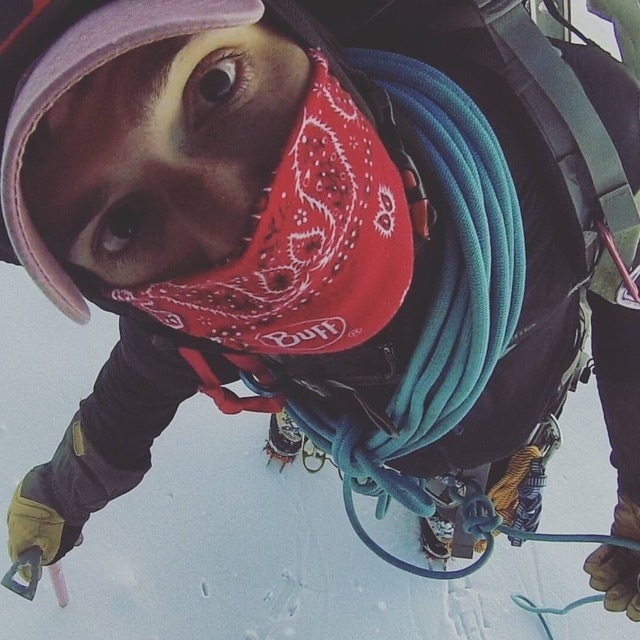Your hands are everything in the winter. They serve as your anchors to the ice pitch, balance points while slashing powder, tools while setting up camp and utensils to help you chop and carry firewood. Between all of that, there's walking the dog, scraping icy windshield, gripping handlebars and even holding frozen steering wheels. That's a lot of exposure to the elements during the coldest season.
But just because it's cold out, doesn't mean you have to sacrifice your hands' effectiveness—or your comfort. The right gloves and mittens protect your digits so you can stay warm, whether you're skiing, hiking, climbing or doing daily chores outside.
Our team of experienced, cold-loving testers spent weeks over multiple winters evaluating how these gloves and mittens performed across a range of conditions and activities. They were put to the test guiding ice climbers in New Hampshire, snowboarding in Lake Tahoe and shoveling driveways in Colorado. One tester even proposed to his fiancée on a backcountry tour in Hokkaido, Japan, while reviewing mittens for this guide. These picks available at REI represent the best in warmth, dexterity, durability, comfort, and features. You can't go wrong with these.
Test Results
For quick recommendations, check out the results of our round-robin here, or scroll down for in-depth reviews.
- Best Gloves for Skiing and Snowboarding & REI Co-op Editors' Choice Award Winner: Hestra Gloves Heli Insulated Gloves
- Best Mittens for Overall Warmth: Black Diamond Mercury Mittens
- Best Value Mittens for Skiing and Snowboarding: The North Face Montana Ski Mittens
- Best Everyday Gloves: REI Co-op Guide Insulated Gloves
Other Top Performers
Best Gloves for Skiing and Snowboarding & Editors’ Choice Award Winner
Hestra Gloves Heli Insulated Gloves
Score 95
Type Standard, five-finger glove
Insulation Polyester fibers
Waterproofing Water-resistant
Removable liner Yes
As good as it gets short of a mitten. For a glove, that's about as much as you can ask for in terms of warmth—and exactly how one tester described the Heli Insulated after a season of use ice climbing and skiing in the Northeast. "My circulation is like Boston at rush hour," he says, "so whenever I saw the temps plummeting into the teens and single digits, I reached for these." The thicker-than-usual liner dishes out generous warmth (it's removable for quicker drying, but you can't wear it alone), while the water-resistant shell traps heat inside. A longer wrist gauntlet ensures no gapping between glove and jacket.
Because the Heli Insulated stays true to its name, you might expect it to be big and clumsy, but it scored surprisingly well in dexterity. Like most ski gloves, it has precurved fingers and leather palms, but the special sauce is the Hestra-unique numeric glove sizing: Instead of small, medium and large, Hestra gloves are offered in several sizes based on the length and circumference of your hand. If you size right, you should end up with a snug, wrinkle-free fit. (This sizing allows for a single unisex model, rather than men's and women's.) With a precise fit, testers could easily hold a ski pole, adjust buckles and clip carabiners.
Our skiing tester praised the Heli Insulated for its snow-specific features like wrist leashes, which let him remove the gloves on the lift to check his phone (they are not touchscreen compatible) without losing them, and the oversize gauntlets, which made them easy to put back on and kept the powder from creeping inside. Ample leather on the palms and fingers kept them from falling apart after months of handling climbing ropes, sharpening ice tools and grabbing ski edges. Buy here.
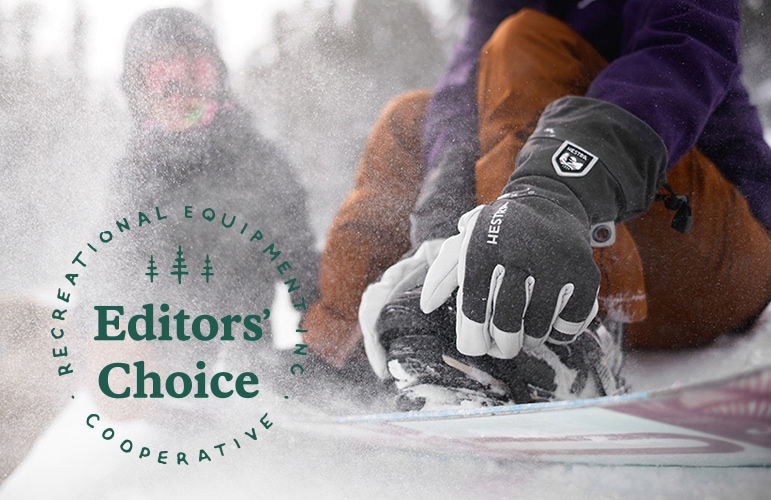
Bottom Line: The Hestra Gloves Heli Insulated Gloves have a mixture of warmth and weather protection with dexterity and durability that give it a Goldilocks combination for cold days playing in the powder.
Testing Stats:
- Days out: 25
- Testing states: New Hampshire, New York, Vermont
- Coldest temp: 3° F in Smugglers Notch, Vermont
- Best testing story: During a single day of guiding ice climbers in Crawford Notch, New Hampshire, our tester sent upwards of 2 miles of rope while wearing these gloves.
Best Value Mittens for Skiing or Snowboarding
The North Face Montana Ski Mittens
Score 93
Type Standard mitten
Insulation Heatseeker™ Eco synthetic fibers
Waterproofing Yes, DryVent waterproof/breathable membrane
Removable liner No
After analyzing these North Face mitts on powder days both in Japan and at home in California's Sierra, our impressed Tahoe-area tester was blown away when he peeped the price tag. “They’re half the price of many options on the market, but they definitely offer more than half the performance,” he says.
Following a string of particularly frigid and windy mornings while snowboarding in Japan, our tester rated the Montana on par with pricier mitts in the warmth department. The dual layers of synthetic insulation, which The North Face claims create a warmth-trapping air pocket, functioned as advertised. He gave kudos to the warmth-boosting fleecy lining, too, calling it the "comfiest interior” of four options he tested. On bell-to-bell resort days, he appreciated that The North Face curved the silhouette of the mittens. “By mimicking the natural, relaxed anatomy of the hand, the fit is more ergonomic and comfortable all day long,” he said.
The North Face lined the DWR-treated, recycled polyester shell with DryVent™ inserts—the brand’s proprietary waterproof and breathable membrane—and we found that the mitts didn't soak through. That said, he worried about materials and construction. “Compared to my go-to genuine leather mitts and gloves, these are certainly less beefy and confidence-inspiring when it comes to long-term durability,” he said.
One note to buyers: While the extra-large cinchable cuffs excel at keeping snow out of the mitts, they’re too bulky to fit easily under slimmer jacket sleeves. Buy the women's and men's.
Bottom Line: A high-quality mitten at a fair price, The North Face Montana Mittens are ideal for everyone from casual skiers to ski bums looking to save money on gear.
Testing Stats:
- Days out : 20
- Testing locations: California; Hokkaido, Japan; Nevada
- Coldest temp : 0 degrees in Northern Hokkaido
- Best testing story: One of our gear testers proposed to his now-fiancée while testing these mitts on a backcountry tour high on a volcano in Hokkaido. Afterward, they rode thigh-deep powder, sipped cold beers and soaked in a traditional Japanese onsen. “Calling it a two-thumbs-up day would be a severe understatement,” he joked.
Best Mittens for Overall Warmth
Black Diamond Mercury Mittens
Score 91
Type Standard mitten
Insulation 170 g PrimaLoft® Gold with Cross Core on the backs of the hands, 133 g PrimaLoft® Gold with Grip Control on the palms
Waterproofing Yes, BD.dry™ waterproof/breathable insert
Removable liner Yes
Warmth is warmth, whether you're in Antarctica or the Lower 48. That's why our testers loved the Black Diamond Mercury, the warmest mitt in our test. A pile of PrimaLoft® on both the back and palms, plus additional boiled fleece, makes them suited to subzero expeditions—or any adventure where you'd prefer warm hands. "Honestly, I only bring these on the coldest days, otherwise they're too warm," says one Colorado-based tester. "But on below-zero lift ski days, I couldn't get away with anything less."
One of those aforementioned days saw temps get as low as -6° F (plus a sturdy breeze) while skiing Colorado's Arapahoe Basin. Everything else was chilled, said our tester, except his hands. The Mercury Mitts feature a liner that you can pull out of the reinforced goat leather outer mitt to let them dry separately on longer trips, and a massive gaiter to fit over the cuffs of even your beefiest jackets.
Warmth like this is bulky, so expect fine motor skills to suffer in this mitten. While we could pull a zipper with a long tab or hold an ice axe, this mitten wears more like a boxing glove than others in our lineup and we lacked the dexterity to do more detailed work like brushing snow out of our ski bindings. Buy here and here.
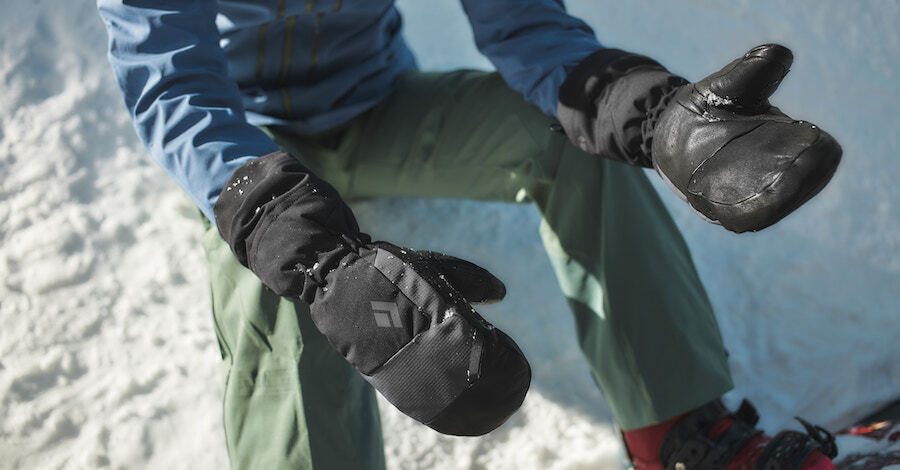
Bottom Line: The Black Diamond Mercury Mittens are a reliable bet whether you're regularly in super-cold climes or just suffer from perpetually cold hands.
Testing Stats:
- Days out: 20
- Testing states: Colorado, New Hampshire, New York, Washington
- Coldest temp: -6° F in Summit County, Colorado
- Best testing story: When what was supposed to be a New Year's cold snap in New Hampshire turned into rain, one tester was still thankful for warm (and waterproof) mitts as a sopping wet hike in the Presidential Range ended by layering up in the visitor center. "These things were dry when I pulled them out of my backpack and I couldn't have been more thankful."
Best Everyday Gloves
REI Co-op Guide Gloves
Score 92
Type Standard, five-finger glove
Insulation Polyester fibers
Waterproofing No
Removable liner No
The gloves you wear skiing or ice climbing are often designed precisely for those missions and see short periods of intense use. But your everyday gloves—the pair you're wearing for everything from walking the dog to shoveling the driveway to stacking firewood—typically need another level of toughness. For our Ridgway, Colorado, tester, that was the REI Co-op Guide Insulated Gloves, and they remained free of rips and tears after a season of use. "They get more use than almost any other gloves I have, and they've stood up to it," he attests. A tough leather exterior with a reinforced palm withstand constant use or even warm-weather ice climbs near home.
The Guide gloves aren't too heavy on insulation, but kept our tester comfortable walking the dog in temps down to the mid-teens—even lower with more active pursuits. A softshell on the back of the hand is stretchy and breathable, and the rib-knit cuffs (with a reinforced pull tab) make it easy to get them on and off.
The Guide gloves aren't waterproof, but testers didn't have issues with leaking or wetting out. The fingers aren't pre-curved, but like most leather gloves, you break them in, and the Guide start to form to your hand. Buy here.
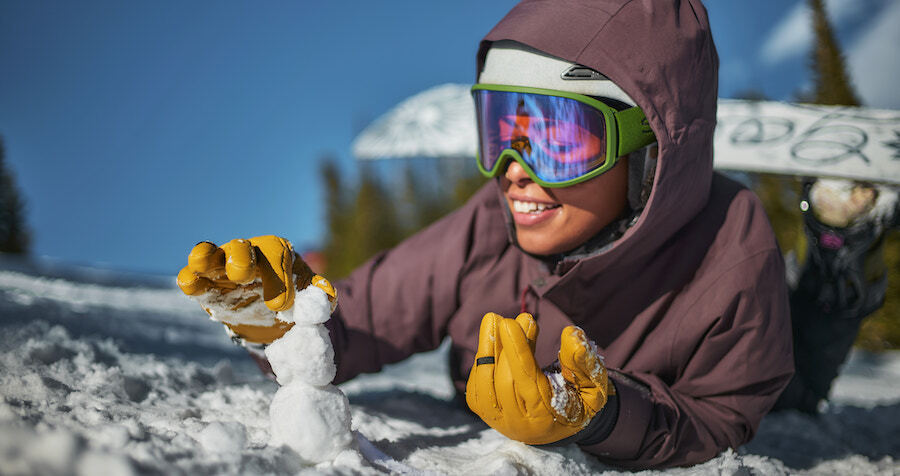
Bottom Line: Thanks to rugged durability and comfort, the REI Co-op Guide Insluated Glove is a real glove-of-all-trades for everyday use.
Testing Stats:
- Days out: 15
- Testing states: Colorado
- Coldest temp: 13° F in Silverton, Colorado
- Best testing story: "These things basically live on the dashboard of my truck, so they're always with me when I'm out," said our tester. "Even on the coldest mornings, they're surprisingly supple and warm up quickly once I get them on."
Other Top Performers
Honorable Mention
REI Co-op Merino Wool Liner Gloves 2.0
Score 82
Type Standard, five-finger glove
Insulation No
Waterproofing No
Removable liner No
Simplicity is the name of the game with these liners from REI Co-op. They slide easily under other gloves and mittens and were just enough to take the bite out of single-digit temps when our tester was forced to remove his mittens atop Colorado's Grizzly Peak. On warmer ski tours, they were all he needed to defend against the brisk morning air while wicking sweat from his skin. The liner itself is an even blend of merino wool and polyester for a best-of-both-worlds combination of warmth and moisture management. (The merino also keeps them fresh. Our pair smelled fine after a three-day hut trip near Vail Pass, Colorado.) Cool: The Merino Wool Liner 2.0 is touchscreen-compatible on the thumb and index finger. Buy here.
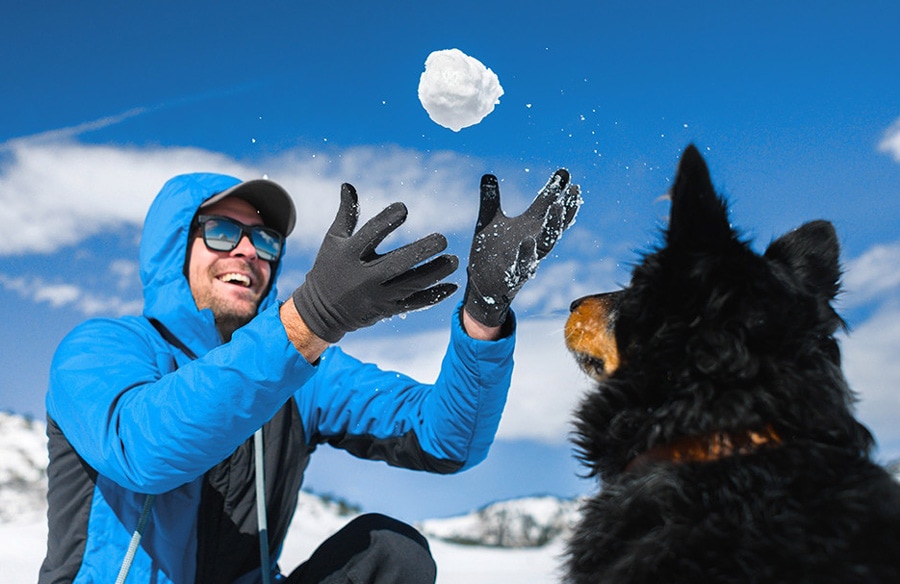
Honorable Mention
Hestra Gloves Fall Line 3-Finger Gloves
Score 93
Type Three-finger glove
Insulation G-LOFT®
Waterproofing Water-resistant
Removable Liner Yes
Gloves or mittens? If the decision has you stumped, maybe the answer is to split the difference. Lobsters like the Hestra Gloves Fall Line separate the thumb and index finger for dexterity, while keeping the middle, ring and pinky fingers contained for warmth. (The liner, which isn't removable, has five fingers.) Our tester liked them specifically for inbounds steeps where the chair-served uphills were chilly, but swinging poles out in front for jump turns was made just a little bit easier with a loose index finger. The Fall Line has a leather outer that has held up to a full season of hard testing and low-profile cuffs that easily slide under jacket sleeves. Buy here.
Shop All Gloves Shop All Mittens
Buying Advice
Question No. 1: Do I want gloves or mittens? What it tends to come down to is that, plainly, separating your fingers makes it easier to use them, whether that's zipping your shell, operating your phone or even pointing out the next run you want to take. Such dexterity tends to be essential in disciplines like backcountry skiing and riding, climbing and working around the house. The problem is that if you're not moving and pumping blood into your fingertips, separating them comes at the expense of warmth.
Enclosing your fingers in one insulated pocket allows them to radiate heat to each other, keeping you much more comfortable on cold days. This might be the best bet for someone who plans to primarily use their mittens lift-skiing at resorts or as emergency backups. You might wear gloves while making camp, but switch into warmer mittens for downtime in the cook tent.
In between, three-finger gloves (or lobster mittens) split the difference. They set apart your thumb and index finger for dexterity, while keeping your less useful fingers together for warmth. Many mittens, like the Black Diamond Mercury, also have glove liners, so your fingers insulate each other inside the mitten, but have a touch of dexterity. (Also, you can remove the mitten shell to use your fingers in the liner without totally exposing skin.)
Dexterity vs. Warmth in Gloves
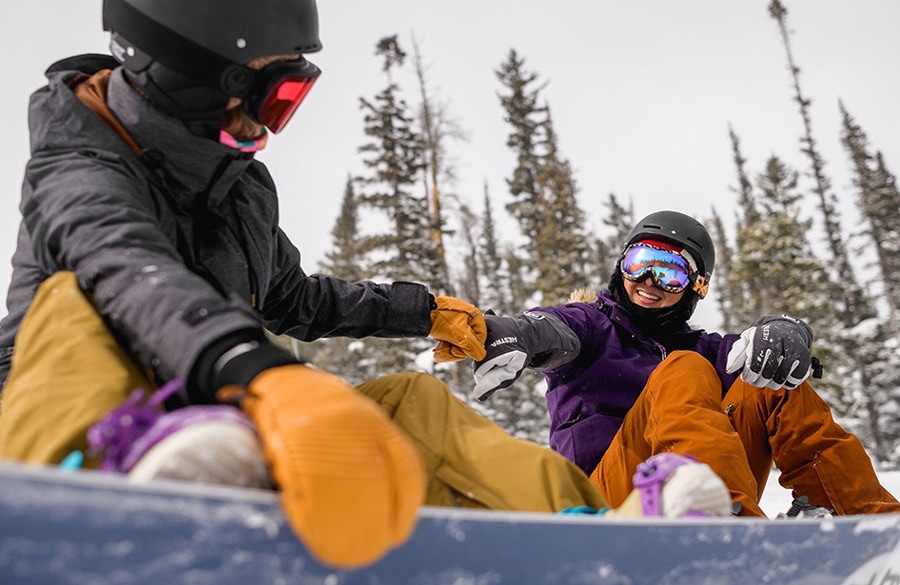
Question number two: Do I want usable fingers or warm fingers? When you narrow your search for gloves specifically, you still have a few considerations because dexterity and warmth are typically on opposing ends of a spectrum. Warmer gloves require more insulation, generally making them bulkier and stiffer. That trade-off is fine for most skiers and snowboarders who will use a glove like the Hestra Gloves Heli Insulated or The North Face Montana Ski Mittens; they're ultrawarm and allow just enough finger control to grip a ski pole or lift the restraint bar.
Gloves with less insulation can be made slimmer to conform better to your hand and fingers, which makes it easier to perform delicate tasks like tying knots, thumbing your dog's leash or even, as one tester raved, "picking your nose."
But know thyself. Sometimes you just don't need that much warmth, and a basic barrier from the elements will serve you well. If you're planning to wear gloves during an aerobic activity like backcountry skiing or shoveling snow, consider a lighter model like the REI Co-op Guide Insulated Glove. A liner like the REI Co-op Merino Wool Liner 2.0 can be worn alone kicking around town, walking the dog or even jogging as slight protection and warmth without impeding dexterity at all.
Find a glove that can do both—keep your hands warm and let your fingers do their thing—and you've hit on the jackpot on handwear.
Read more in our article, How to Choose Gloves or Mittens.
Our Process
Over the past four seasons, we sent out more than 40 pairs of gloves and mittens sold at REI to a cadre of trusty members to test and use as much as possible. We asked our crew to use it in as many conditions as possible and doing as many different things as co-op members do: ice climbing, resort and backcountry skiing, shoveling the driveway, winter camping, biking to work and more.
After ample use, those testers collected their thoughts and graded each glove on its warmth, dexterity, durability, comfort and features. Those scores were tallied up and averaged; the top performers in each category are represented in this guide, as well as a handful of next-bests.
Editor's note: We're constantly testing new products in the field, and plan to update this guide accordingly.
Photography by Andrew Bydlon
Related Articles
- How to Choose Gloves and Mittens
- What to Wear Skiing and Snowboarding
- The Best Winter Jackets: Staff Picks
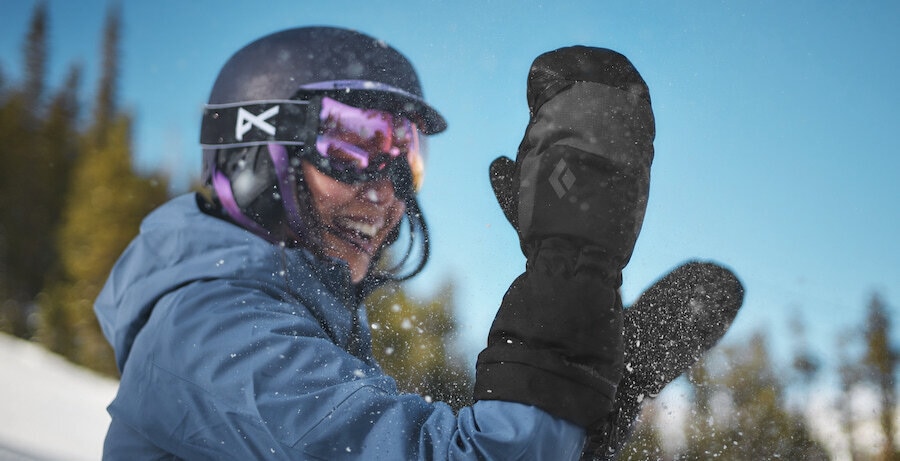
![Heli Insulated Gloves [ ]](/media/ddccff54-820b-4df3-9464-fe5c276e42df/?size=440)
![Heli Insulated Gloves [Liner view (Black)]](/media/e678dd64-91b2-45c5-ba07-57a9f2cbe9f1/?size=440)




















